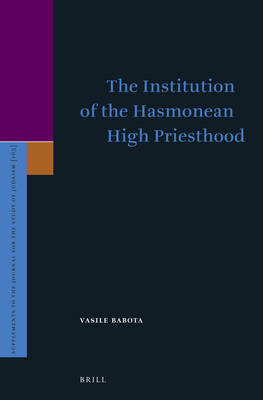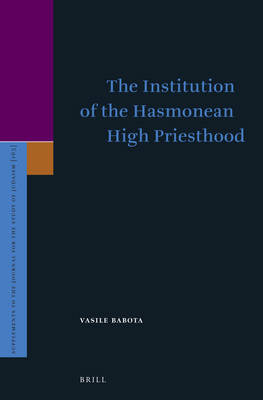
- Afhalen na 1 uur in een winkel met voorraad
- Gratis thuislevering in België vanaf € 30
- Ruim aanbod met 7 miljoen producten
- Afhalen na 1 uur in een winkel met voorraad
- Gratis thuislevering in België vanaf € 30
- Ruim aanbod met 7 miljoen producten
Zoeken
Omschrijving
In The Institution of the Hasmonean High Priesthood, Vasile Babota offers an interdisciplinary study of the establishment of the Hasmonean priests as high priests in Jerusalem, from their revolt in 167 down to 140. The Hasmonean high priests exercised both religious and civil powers until 37 B.C.E. and some acted also as kings. Previous studies looked at them mainly from a biblical /Jewish perspective. Vasile Babota persuasively argues that the first high priests Jonathan and Simon acted as Hellenistic high priestly rulers. This conclusion is based on an analysis of the activity of the high priests Jonathan and Simon on internal and external levels, a comparison with earlier Jewish high priests, and a comparison with Hellenistic (Seleucid and Ptolemaic) high priests.
Specificaties
Betrokkenen
- Auteur(s):
- Uitgeverij:
Inhoud
- Aantal bladzijden:
- 368
- Taal:
- Engels
- Reeks:
- Reeksnummer:
- nr. 165
Eigenschappen
- Productcode (EAN):
- 9789004251779
- Verschijningsdatum:
- 3/12/2013
- Uitvoering:
- Hardcover
- Formaat:
- Genaaid
- Afmetingen:
- 165 mm x 239 mm
- Gewicht:
- 725 g

Alleen bij Standaard Boekhandel
+ 558 punten op je klantenkaart van Standaard Boekhandel
Beoordelingen
We publiceren alleen reviews die voldoen aan de voorwaarden voor reviews. Bekijk onze voorwaarden voor reviews.











